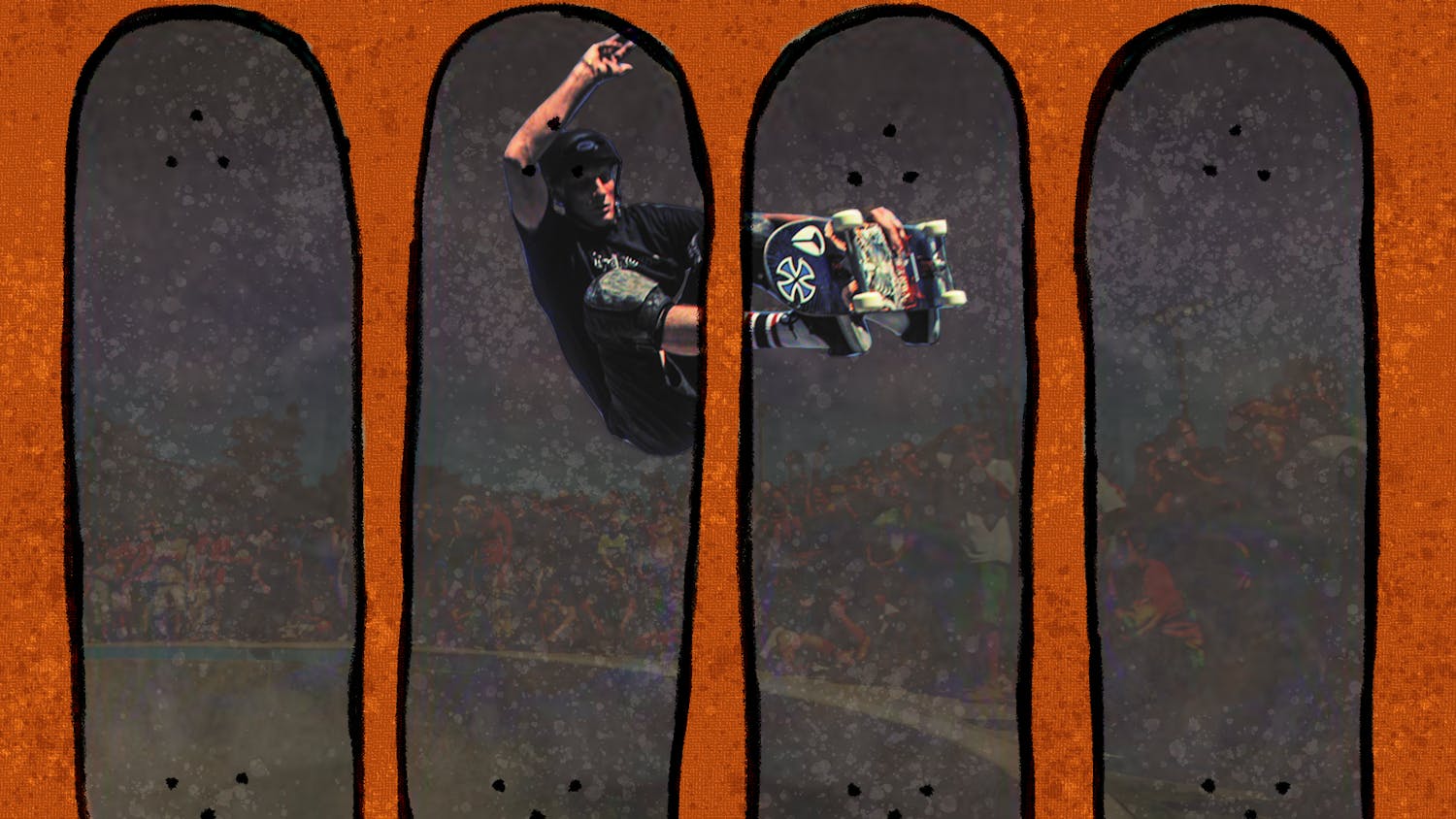Make no mistake about Sasami—it might be easy to peg her as a shoegaze artist, but that does little to describe the blend of synth and guitar sounds on her debut album, SASAMI. It's easy to describe her sound as drawing upon her time in Cherry Glazerr as their synth player, but that, too, fails to capture the heart of it. Sasami Ashworth herself describes the album as "drafting a long, angry text in the Notes section of an iPhone and then letting it simmer," which comes close. She sings in the album's opener, "I Was A Window":
Words hanging over from yesterday's ending thoughts
All strung together with the feeling I almost lost
So I wrote them all out
And it's you that they're about
And I almost sent it through
But nothing will ever perfectly capture the sense of immersion her album conjures more perfectly than the album cover, a photo of Sasami on a trip to Alaska, stepping across blocks of ice with trepidation against a vast, white background. You can almost feel the chilly, dry air, the open and unassuming horizon, and just a hint of caution. When you listen to SASAMI, you step into her world.
"I didn’t want the album art to be some fabricated photoshoot image," Sasami tells me over the phone, "I wanted to use a pre–existing photo. That was the last vacation I’ve been on, in 2015."
Despite having just released her debut album, Sasami is by no means a novice. She got her start as a musician at an early age playing classical French horn, and went on to study that same instrument at conservatory. Since, she's composed for films and commercials, taught music, played with rock band Cherry Glazerr, and worked with others like Curtis Harding and Wild Nothing on their albums. She'd never written lyrics before, however, and had to wait for just the right moment to make her debut.
"I never really felt called to write songs, [...] and I didn’t want to ever write songs until I knew I was ready and could do a good job with it. When I started writing this album, something clicked and I just was ready. I just gained all the skills and emotional tools I needed to start writing."
For the record, Sasami eschewed forming a band around herself to perform, instead recruiting several musicians to feature on the project. Soko and Meg Duffy (of Hand Habits) contribute to "Adult Contemporary," while Dustin Payseur and Devendra Banhart contribute on "I Was a Window" and "Free," respectively.
"I was producing the album, so I didn’t want to play every instrument and be too precious with every part," Sasami says, "I wanted to have a democracy of perspective of all the parts. I wrote every single part on the album, so I wanted to have other people play a lot of it so that I could sit back in the director’s chair and have a democratic approach to which parts I kept and which parts I moved to the front of the mix or how I mixed everything. I think sometimes when you perform stuff yourself you lose that perspective."
She also recruited her brother, Joo–Joo Ashworth, to work with her for the album. Although initially they had very different musical tastes, after Sasami returned home from conservatory, she found that their tastes aligned much more than before. "I wouldn’t have asked him [to play on the record] if I didn’t like his guitar style, and also just he was very humbly playing exactly what I wanted to play, too. So he was a collaborator and also kind of a hired gun in some ways."
Her careful curation of the album is evident throughout the work. She had to discard a few tracks for the album, but ultimately came up with a finished product that flows seamlessly from song–to–song, each one tonally distinct but not foreign to its neighbors. "I was thinking about how I listen to albums, and I think that the sounds themselves, on a basic level, display a lot of dynamic shifts, and I wanted to flow of the album to be the same, where there’s a kind of dynamic and tempo shifts throughout."
She also recorded the entire album in analog, which presented challenges at times, but also helped her to reach the sound she had initially imagined. "I think what frustrated me most was I was very involved with the mixing process. When you’re recording analog, you get maxed out by a certain volume on the board. Sometimes I would want to make something louder and there was no more headroom to do that."
"I think I was mostly very liberated by the restrictions because it forces you—because you only have 16 tracks—you have to really make every track essential. And also when you’re performing the parts, there’s a little bit more skin in the game. You can’t just play 20 versions of a guitar solo and use seconds one through five on take four, and seconds six through ten on take 17. Either you record over it or you keep it."
Sasami feels restricted, in that sense. Sasami could use opportunities to max out drums, to scream into the microphone, or to launch into an extended guitar solo. However, the entire record feels restrained, like trying to save face before you go home to scream into your pillow.
"Turned Out I Was Everyone" closes out the album, a mellow, meditative synth beat with Sasami repeating the lines "Thought I was the only one / Turned out I was everyone / To be so alone in the night." She wrote the song after the rest of the album, late at night while mixing. "When I hear that song, I think about kind of a culmination of sentiment that the album drew out of me and that I poured into the album." Sasami may have been borne out of years of influence, various sources of inspiration, and countless contributors, but make no mistake: this album was no product of the past. Sasami was present for every moment.
Sasami performs at PhilaMOCA Monday, April 29th, 2019. Sen Morimoto opens. More info available at her website.







